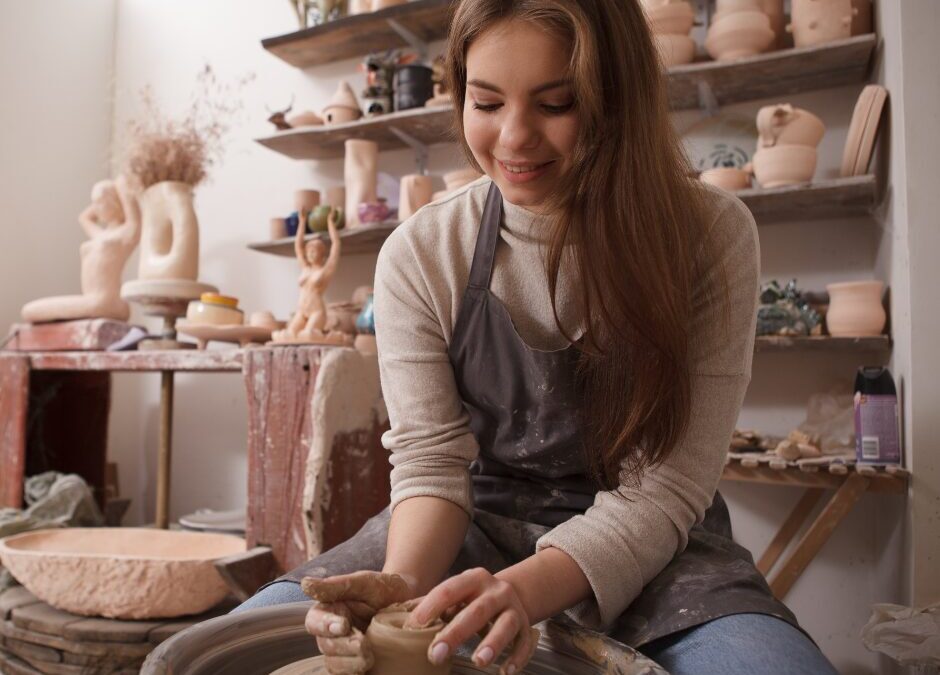
Wheel Throwing Basics
While wheel-throwing can only be learned through experience, it is helpful to understand the logistics of the practice before beginning. Using wet clay is a process that takes a long time and lot’s of
patience, but truly anyone can learn to master the skills.
Before throwing on a wheel, you first need to wedge the clay. Wedging is the term used for preparing the clay by compressing it, to get rid of any air bubbles. Wedging can be done on a table,
preferably a cork one, or in your hands by smacking the clay into a ball shape. Your approach to wedging will likely depend on how many pounds of clay you’re using. For beginners, we suggest starting with one
pound.
The first and most important step of wheel throwing is centering. This can be deceivingly difficult at first, but becomes muscle memory. Begin by securing your ball of clay to the dry bat, as close the to center as you can. Then, anchor your left arm to the edge of the wheel and cup your left hand firmly around the base of the clay. With your right hand, use the base of your palm to firmly press upward. This will make more sense when you can practice in person. Ultimately, you will squeeze the clay upward to a cone shape, then work it back down to a mound. The more you do this, the more centered the clay will become, and it will eliminate any lingering air bubbles.
The best way to practice throwing is by making a cylinder. Once you can throw a cylinder with even walls, you will have a very strong foundation for anything else. To learn how to throw a cylinder, consider trying a pottery class at your local studio.
After throwing, pieces need to dry. If you want to keep working with your piece, to add a handle or carve out designs, you want it to dry to leather hard. This means the pot will hold its form, but still has
enough moisture to be malleable. This is when you can trim the base of the piece. If you’ve ever turned over a mug and seen a nice round edge or design, that is called a foot and is made in the trimming
process. You trim off excess clay and leave a satisfying shape or design.
Next, pots need to dry to what we call bone dry to be fired. There cannot be any moisture in the clay when it heads to the kiln. It usually takes a few days for pieces to dry completely. After it is out
of the kiln, about 36 hours later, you can begin to glaze. After glazing, pieces need to dry completely again, and then do another kiln cycle. It certainly is a waiting game!
While this process can seem daunting, it is very rewarding. There are many steps, but once you learn foundational skills, you can easily create anything you like. So, begin your wheelthrowing journey now!

